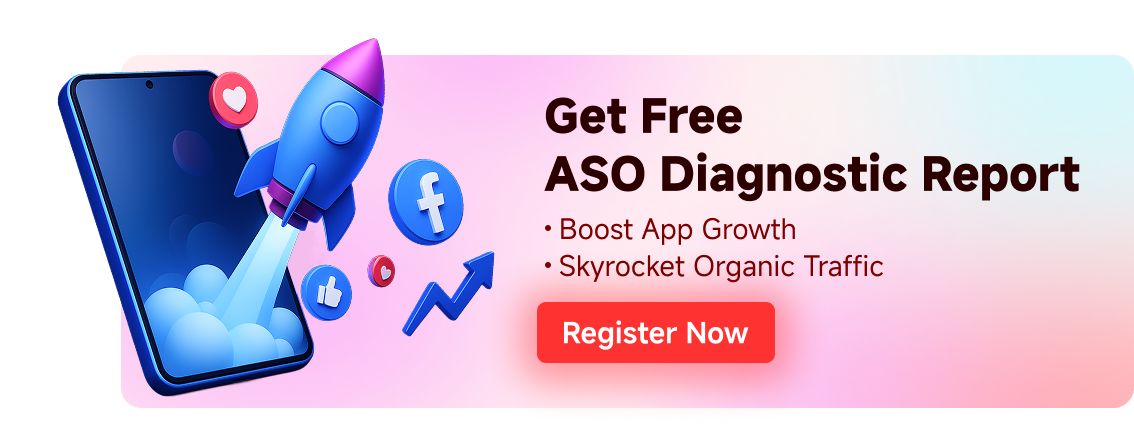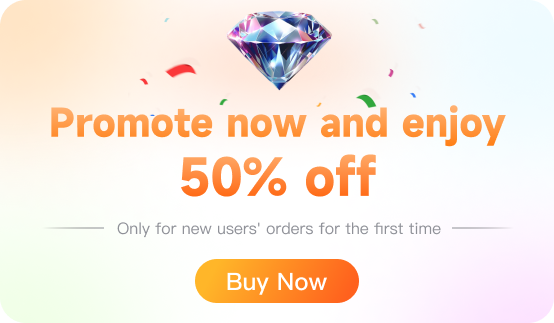Free consultation with ASO specialists
Doing ASO for the first time or have no idea how to carry out targeted optimization of your app?
We offer one-on-one customized services provided by app marketing specialists
Soaring cost of acquiring new users? Use ASO to build an efficient and low-cost user growth engine
2025-07-10
aso
Marketing strategy
Keyword Optimization
Metadata Optimization
App Store Optimization
Keyword Research
Faced with the dual pressures of declining mobile internet traffic and tightening privacy policies, a new reality confronts all app developers: user acquisition costs (CAC) continue to soar, becoming a "black hole" that devours profits. Facebook's advertising prices have risen year after year, Google Play's cost per install (CPI) has repeatedly set new highs, and the return on ad spend (ROAS) for paid channels continues to be under pressure. As paid promotion becomes increasingly expensive and uncertain, seeking a more sustainable and cost-effective growth engine has become a core issue concerning the survival of applications. And ASO (App Store Optimization), with its focus on organic traffic and optimization of long-term value, is rapidly transforming from an "option" to a "must-have", becoming the core engine driving efficient user growth.
I. Why is ASO the key strategy to break through the CAC dilemma?
-
Natural traffic: a gold mine with low cost and high intention
App stores (especially Apple App Store and Google Play) carry a huge amount of active search traffic every day. These users come with clear search intentions, and their conversion potential is much higher than that of passive display advertising. Capturing this part of the traffic through ASO optimization is essentially to acquire high-quality, low-cost quality users. Compared with the paid installation cost of several dollars or even tens of dollars, the natural user acquisition cost brought by ASO can be as low as one-tenth of it or even close to zero.
-
Long-tail effect, building a sustainable growth flywheel
The effect of ASO investment has significant long-term benefits. A successful keyword ranking improvement, an excellent app description, and a set of attractive screenshots and videos can continuously bring in organic traffic, forming a positive cycle of "optimization-exposure-download-optimization". This is in stark contrast to the characteristics of paid advertising, where "stopping the investment stops the flow", providing enterprises with a more stable and resilient user base.
-
Improve brand trust and conversion efficiency
A well-optimized app store page (including an attractive icon, professional and clear screenshots/videos, detailed and credible descriptions, positive user ratings and reviews) not only increases exposure, but also effectively establishes the user's first impression and trust in the brand. An application that looks professional, reliable, and has good ratings will have a much higher conversion rate (from browsing to downloading) than competitors with rough pages and poor ratings. ASO optimization directly affects the key links in user decision-making.
-
Hedge the impact of privacy policy changes (such as ATT)
Apple's App Tracking Transparency the (ATT) framework greatly limits the accuracy of cross-application user tracking, resulting in a decrease in the effectiveness of precise advertising based on user profiles and an increase in costs. ASO mainly relies on metadata within the app store (text, images, videos) and user behavior data (downloads, retention, ratings), which is relatively less affected by ATT, becoming an important stable channel for obtaining measurable users in the new era of privacy.
📊 How is your app performing in the "organic traffic gold mine" of the store?
In the face of high CAC, ASO is a must. But have your app title, keywords and description fully tapped into the potential of search traffic? Can icons and screenshots effectively persuade users to download?
👉 [Click the button below to get your app ASO competitiveness quick diagnosis report for free]
In just 1 minute, learn about your core keyword rankings, page ratings and key optimization opportunities! Act now to seize the opportunity of low-cost traffic.
2. Core optimization modules for building an efficient ASO growth engine
ASO is like an engine, and its efficient operation depends on the precise coordination of multiple core components:
-
Keyword Research and Optimization: The "Fuel" System of ASO Engine
-
In-depth research: Beyond tool recommendations, combine business goals, user search habits (long-tail keywords, semantic associations), competitive strategies, and localization needs (differences in language habits across regions) to uncover high-volume, moderately competitive, and highly relevant core and long-tail keywords. Tools like UPUP are important aids, but manual analysis and business insights are indispensable.
-
Strategic deployment: Integrate core keywords precisely and naturally into the app title (Title), subtitle (Subtitle - iOS), short description (Short Description) and full description (Long Description). The title and subtitle of Apple App Store have extremely high weight, which is a must-win place. The short description of Google Play is also critical. Avoid rigid piling up, pay attention to readability and semantic relevance.
-
Continuous tracking and iteration: The keyword market is dynamic. Regularly monitoring keyword rankings, changes in search popularity, and competitor trends, and flexibly adjusting strategies are key to maintaining ASO optimization results. Monitoring keyword installations can help determine which words actually bring users.
-
Metadata (title, description, subtitle): Engine's "intake" and "combustion" efficiency
-
Title/Subtitle (iOS): Must include the most core 1-2 keywords, clearly convey the core value of the application ("what to do") and unique selling points ("why choose you"). The characters are limited, so you need to be careful. For example: "FitnessPal: Calorie Calculator & Diet Plan" is better than simple "FitnessPal".
-
Description: The first few lines of the short description (Google Play/iOS preview text) determine whether users click "more". Highlight core features, key pain points solved or main advantages with the most concise language (including core keywords) to arouse interest. The full description presents value propositions in a structured way. Use paragraphs and symbols (emojis, bullet points) to enhance readability. Clearly explain features, target users, unique advantages, highlights of updates. Naturally integrate more relevant keywords (secondary keywords). Call on users to download or take action.
-
Localization: Accurate translation and optimization for the language and cultural habits of the target market is not simple machine translation. This directly affects local users' search and conversion.
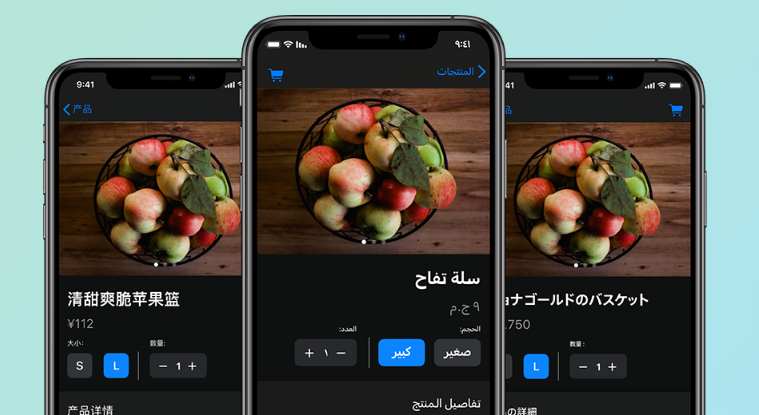
-
Visual assets (icons, screenshots, video previews): The engine's "look" and "appeal"
-
Icon: The first visual identifier of the app. It needs to be clear and distinct even in small sizes, and convey the brand or core functionality. Regular A/B testing of different designs for their impact on conversion rates is crucial.
-
Screenshot: The core persuasion tool of the app store page. Tell the value story of the app in order: the first picture catches the eye (core selling point / shocking effect), the subsequent pictures show key features, user scenarios, actual interfaces, social proof (such as abstracts of user reviews), and the final picture reinforces the call to action. Add concise and powerful copy descriptions. High-quality, real-scene pictures are far better than pure interface screenshots.
-
App Preview Video (iOS) / Promotional Video (Google Play): Showcase your app's appeal with a dynamic video. The first 3 seconds are crucial, so grab users' interest immediately. Clearly demonstrate core features, user benefits, and use cases. Keep it short (15-30 seconds is ideal), sync audio and visuals, and end with a clear call to action. This is a powerful tool for boosting conversion rates.
-
Ratings and Reviews Management: The "Lubrication" and "Word-of-Mouth" System of the Engine
-
Ratings: Ratings and reviews are important references for user decisions, and they also directly affect the search ranking and recommendation weight of app stores. It is crucial to maintain a high average score (4.5+ is an ideal target).
-
Ratings & Reviews: User feedback is a gold mine. Respond to all reviews (especially negative ones) in a positive manner, showing that you value users and are willing to solve problems. Responding to negative reviews is a key opportunity to salvage your reputation. Encourage satisfied users to leave positive reviews (you must guide them at the right time within the app in a friendly manner; absolutely no inducement or rewards).
-
Strategy: Establish an efficient review monitoring and response mechanism. Use user feedback (especially criticism) as an important input for product iteration. Good ratings and reviews management is the cornerstone of improving ASO optimization results and user trust.
-
Downloads, Retention and Engagement: The Engine's "Power Output" and "Health Indicators"
-
App store algorithms are increasingly focusing on post-acquisition user behavior. Apps with high download volumes combined with low uninstall rates, high engagement and long user lifetime value (LTV) will receive higher weights and better exposure opportunities.
-
The ultimate goal of ASO optimization is not only to bring downloads, but also to bring valuable, active and long-term retained users. This means that the quality of the product itself, user experience and core value delivery must be solid. ASO is closely linked with product experience and user operation.
🚀 Ready to fire up your ASO growth engine with the system?
Keyword research, metadata refinement, visual asset optimization, ratings management, data tracking... ASO is a sophisticated project that requires professional knowledge and continuous investment. Is it inefficient to explore alone? Is it difficult to ensure the effect?
👉 [Download ASO High-efficiency Growth Engine Start-up Guide 》+ Get exclusive optimization plan consultation ]
This guide includes:
-
Core Keywords Mining Template and Practical Skills
-
High Conversion Metadata Writing Framework
-
Visual Assets A/B Testing Checklist
-
Ratings and Reviews Management SOP
-
Book a professional consultant to customize an ASO optimization plan for you and break the CAC dilemma!
3. iOS (Apple App Store) ASO Special Strategy: Deep Cultivation of Value High Ground
Given that Apple App Store users generally have a higher willingness to pay and user value, optimization for iOS requires additional attention:
-
Subtitles and the ultimate use of 100 characters
This is a high-weight field unique to iOS. It must include core keywords and value propositions. Regularly test the impact of different subtitles on conversion rates and keyword coverage/ranking.
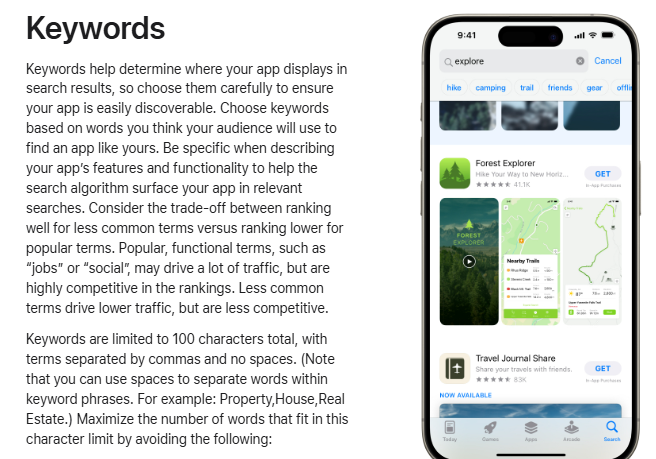
💡 If you still have questions about the 100-character setting or keyword selection for Apple App Store, please feel free to contact AppFast customer service. Our ASO experts will provide you with exclusive optimization suggestions for free to help you solve problems efficiently.
-
In-App Activity Integration
Use the features introduced in iOS 26+ to showcase time-limited events, challenges, new content releases, etc. directly on the App Store page. This is a powerful tool for increasing page appeal and promoting instant downloads. Make sure that event information is reflected in metadata and visual assets.
-
Product Page Optimization
Allow the creation of customized app store landing pages for different user groups (such as from different advertising channels, different interest tags). By targeting the display of the most relevant features and selling points, conversion rates are greatly improved. This is an advanced means of fine-grained operations.
-
Deeply concerned about localization and internationalization
iOS users are spread all over the world, and deep localization (language, culture, payment habits, holiday activities) for major target markets is the key to success.
-
Using Apple Search Ads (ASA) data to feed back ASO
The search term report generated by ASA is a valuable source for mining high-value, high-conversion keywords and can be directly used to optimize natural ASO keyword strategies. The two work together to double the effect.
4. From Theory to Practice: Typical Cases of ASO-driven Growth
Case 1
Focused on tool applications (iOS): A professional image editing tool, which initially relied mainly on paid advertising and had a high CAC. Through in-depth ASO optimization:
-
Reconstruct the title and subtitle, accurately embed core industry words and long-tail words, and improve keyword rankings.
-
Optimize screenshots and videos to highlight unique AI features and professional effect comparisons.
-
Establish a positive ratings and reviews response mechanism, and optimize the in-app process for guiding positive reviews.
-
Deep localization descriptions and visual adjustments for different countries (US, Japan, Germany).
Results: The ranking of core keywords entered the top 3, natural downloads increased by 150% within 6 months, the proportion of natural traffic increased from 30% to 65%, and the overall user acquisition cost decreased by 40%. Long-term stable natural traffic has become the cornerstone of growth.
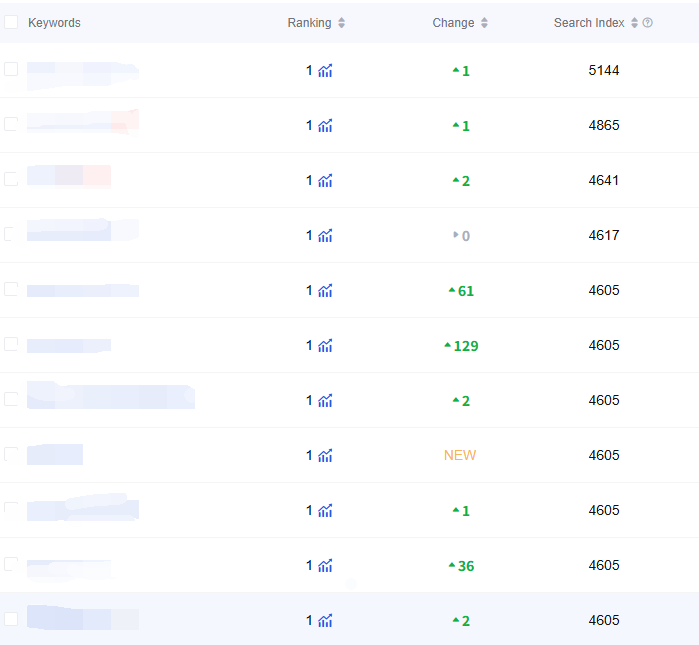
Case 2
Subscription Lifestyle App (iOS): A healthy recipe subscription app facing intense competition and low conversion rates. Strategic ASO adjustments:
-
Keyword research focuses on high-intent words such as user pain points and needs, and increases keyword coverage through metadata optimization and keyword coverage.
-
The first screenshot highlights the solution to the pain point of "personalized customization", and the subsequent screenshots clearly show the diversity of recipes, shopping list generation, calorie tracking and other functions.
-
Highlight the value of your subscription in the description (e.g., "weekly updates," "recommended by expert nutritionists"), and clearly state the free trial period.
-
Actively manage ratings and reviews, and respond quickly to user questions about recipe difficulty or ingredient availability.
Results: The number of target keywords covered increased by 120%, the conversion rate of the store page increased by 35%, the natural source of paid subscribers increased significantly, and the user lifetime value (LTV) increased, reducing the overall CAC burden.
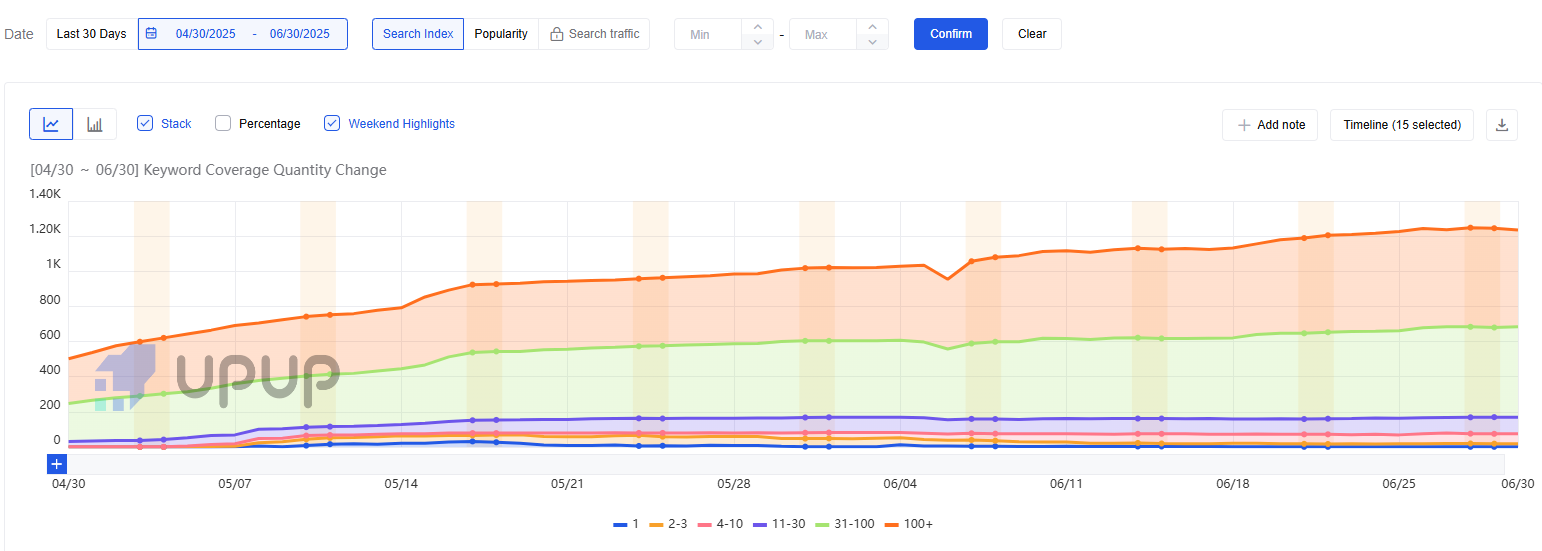
✨ Like them, let ASO become your efficient growth engine!
Case studies have proven that systematic ASO optimization can significantly increase organic traffic, reduce CAC and drive sustainable growth. Do you also want to unlock the ASO potential of your app?
Our experts will analyze the core opportunities based on your application category, target market and current data, and develop a customized ASO growth roadmap for you.
5. Start your ASO high-efficiency growth engine: Take action now
The skyrocketing cost of user acquisition is not an irreversible predicament. ASO offers a proven, efficient, and sustainable solution that transforms your app store page from a simple showcase window into a powerful user growth engine. By systematically implementing keyword optimization, metadata refinement, visual asset upgrades, ratings and reviews management, and focusing on user value metrics, you can significantly enhance organic visibility, attract high-intent users, and drastically reduce the cost of acquiring customers.
However, ASO is a long-term project that requires professional knowledge, continuous investment and fine operation. The market is changing, the algorithm is updating, and competitors are constantly optimizing. Do you want to know where your app stands in the current fierce competition of the app store? Have you made full use of all ASO opportunities?
Act now to take advantage of low-cost growth.
Don't let the high cost of customer acquisition erode your profits. Embrace ASO, build your own efficient and low-cost user growth engine, and win a sustainable future in the competition of the application market!
Related recommendations
